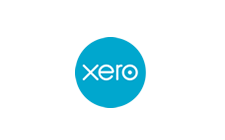Will your employment allowance run out?
Although you have thus far avoided the employers’ NI hike thanks to the employment allowance, you could be hit with a cash-flow crisis if it’s exhausted before 5 April. What can you do about it?

Employment allowance
While all employers have had to survive the double whammy of paying 15% employers’ NI on earnings above £96 per week (£5,000 p.a.) since 6 April 2025, the pain is alleviated by the employment allowance (EA) which is available to most employers. Hiding under the radar, an EA claim silently reduces the NI payable by £10,500 for 2025/26.
Claims
The EA isn’t applied automatically so you have to claim it by ticking the box on an employer payment summary. Claims don’t automatically roll forward each year either, so check the 2025/26 EA indicator/field in your software is marked “Yes”.
Although one-person companies, where the director is the sole employee, are ineligible, taking on (even temporarily) another employee who is paid more than £96 for just a single week will give access to a full year’s EA. A claim made mid-year still entitles you to the full EA which will offset any prior employers’ NI paid, leading to a credit on your PAYE account which could be refundable.
How it works
Each time the payroll is run, a chunk of the EA is used up until it runs out. This means it is not evenly spread throughout the tax year which can lead to a hefty NI bill when you least expect it.
Example. Sue runs a pre-school, employing ten part-time workers. The employers’ NI of £1,050 per month is covered by the EA but this will be used up by January 2026. She will see a sudden increase of £1,050 in her monthly NI bill for February and March.
Softening the blow
Half the battle is knowing if, and when, the EA will be extinguished. Your payroll software should note how much of the EA you have used this year. Check now so you can factor it into your budget for the rest of the tax year.
Eligible employers should also ensure they have claimed the EA in the last four tax years back to 2021/22. Due to changing thresholds, the EA is worth £5,000 in each of the years 2022/23 to 2024/25, and £4,000 for 2021/22.
You can request a refund from HMRC where the resulting employers’ NI rebate exceeds any outstanding PAYE, VAT or corporation tax liabilities.
Delay tactics
If you can’t reduce the amount payable, delaying the payment could give you some much needed breathing space.
Employers whose average monthly PAYE is below £1,500 can arrange to pay their PAYE/NI quarterly, i.e. NI payable for January to March would be delayed until 22 April, by calling HMRC on 0300 200 3401. Delay pay rises and bonuses until after 5 April 2026, so you aren’t increasing the NI bill even further. A longer-term solution is to offer pension contributions in lieu of extra salary as these escape NI.
Related Topics
-
Multiple tax-free perks for directors
With Christmas in mind a fellow director has suggested your company uses the trivial benefits in kind exemption to provide £300 of tax and NI-free gifts to each director. You’ve heard about the exemption but can it be used in this way?
-
Are IHT changes coming?
You’re seeing a lot of speculation in the press about further changes to inheritance tax (IHT) in the upcoming Budget, including a cap on the amount you can give to your loved ones. Would you be better off making gifts before the Budget date?
-
Company motorbikes - a two-wheeled tax trap?
You’ve taken on a youngster as a general assistant for your business. The role includes making local deliveries for which your firm provides a motorbike. This could trigger unexpected tax and NI charges. What steps can you take to avoid them?






 This website uses both its own and third-party cookies to analyze our services and navigation on our website in order to improve its contents (analytical purposes: measure visits and sources of web traffic). The legal basis is the consent of the user, except in the case of basic cookies, which are essential to navigate this website.
This website uses both its own and third-party cookies to analyze our services and navigation on our website in order to improve its contents (analytical purposes: measure visits and sources of web traffic). The legal basis is the consent of the user, except in the case of basic cookies, which are essential to navigate this website.